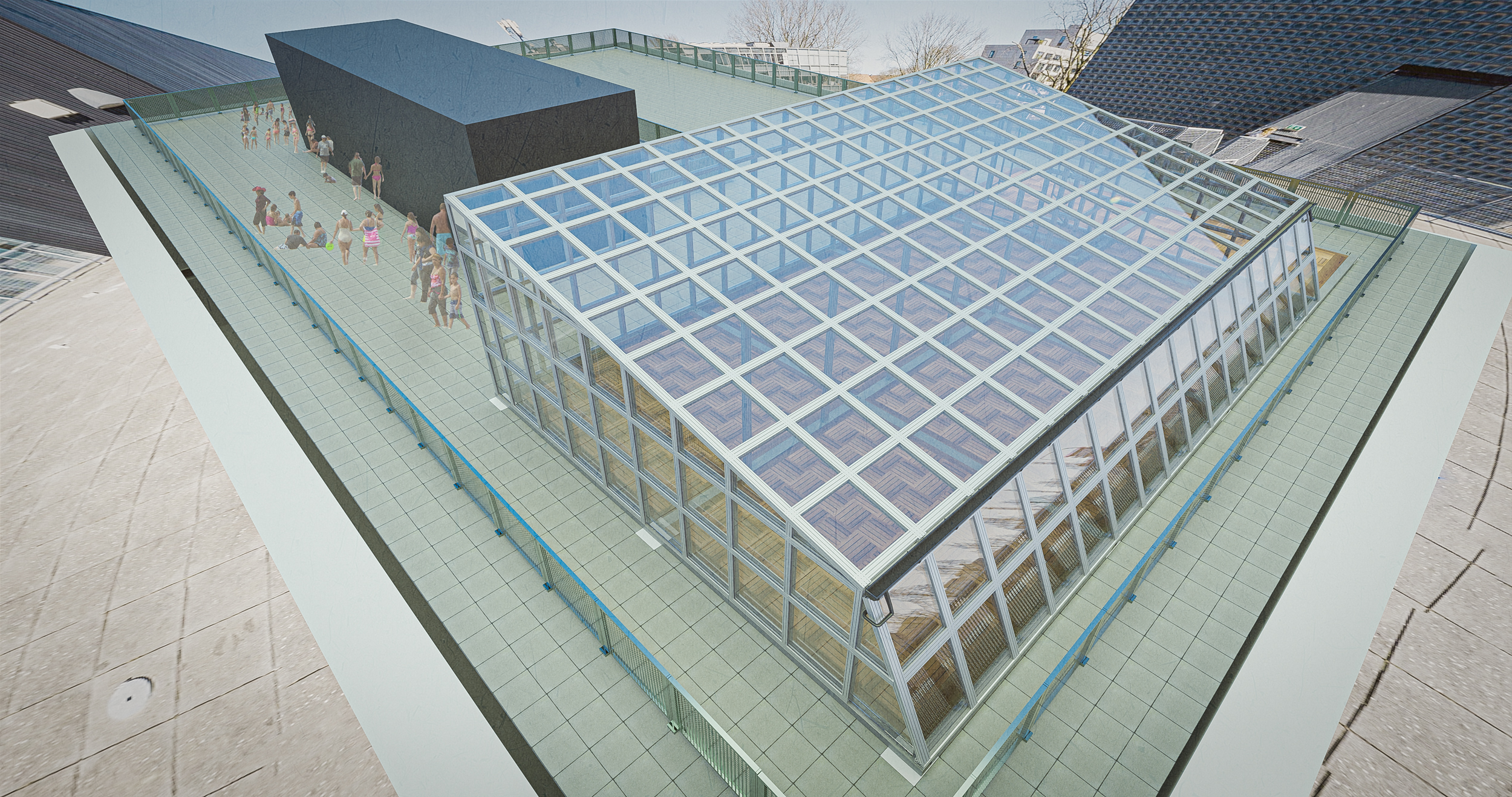
Overview:
The purpose of this project proposal is to transform the unused rooftop space of the FedLev building into a multi-functional and sustainable greenhouse. The proposed greenhouse will cover 160 square meters and could serve as a hub for hydroponic farming, community events, exhibitions, and performances. By using renewable energy sources, such as a new technology of windmills and transparent solar panels, the greenhouse will become a self-sustaining structure that generates electricity for both its own needs and potentially for the Fedlev building. Moreover, it will provide the highly needed space for students to meet outside their working spaces. Least but no last, canteen could use a big part of the produced vegetables and herbs for their meals.
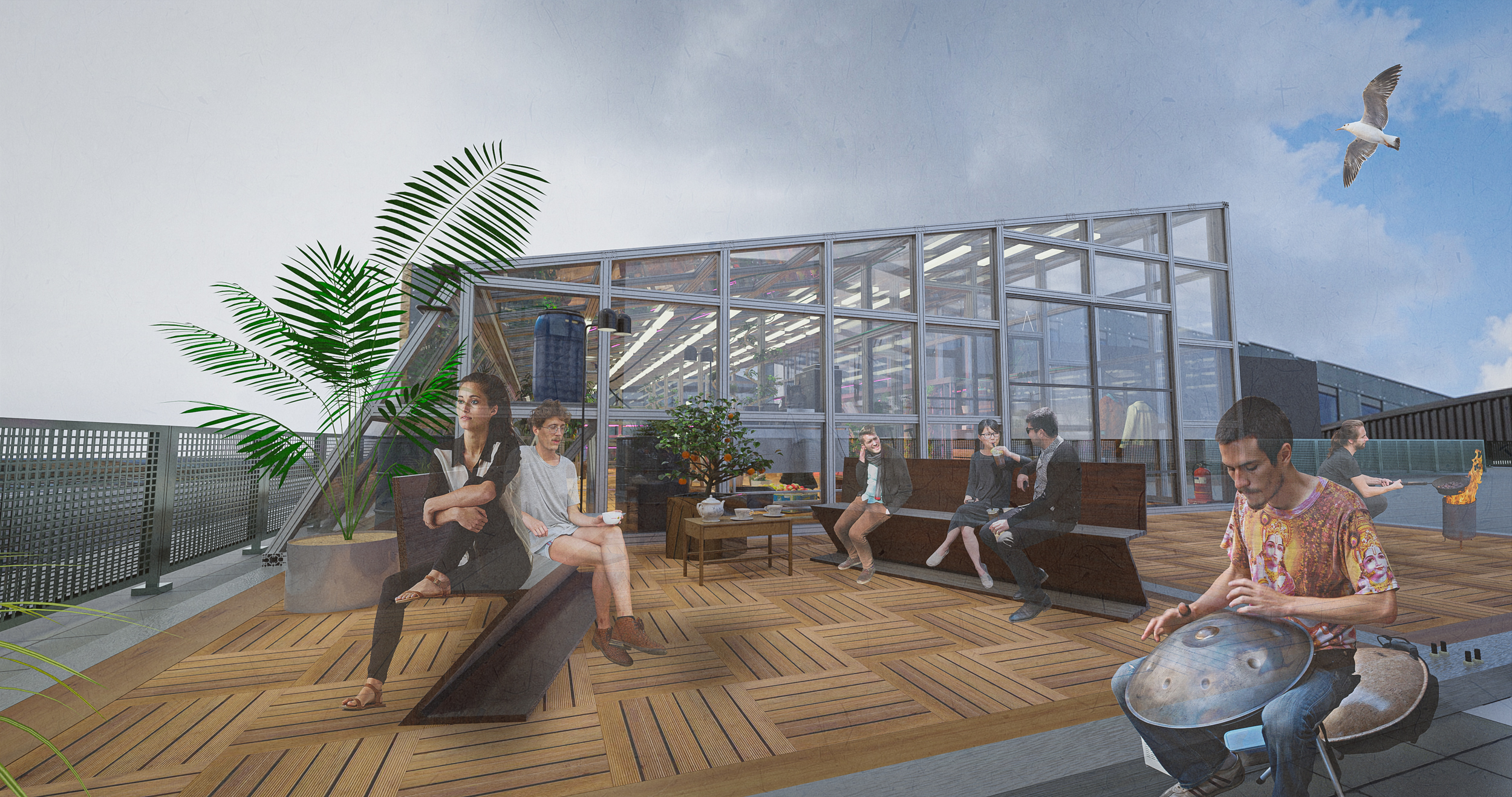
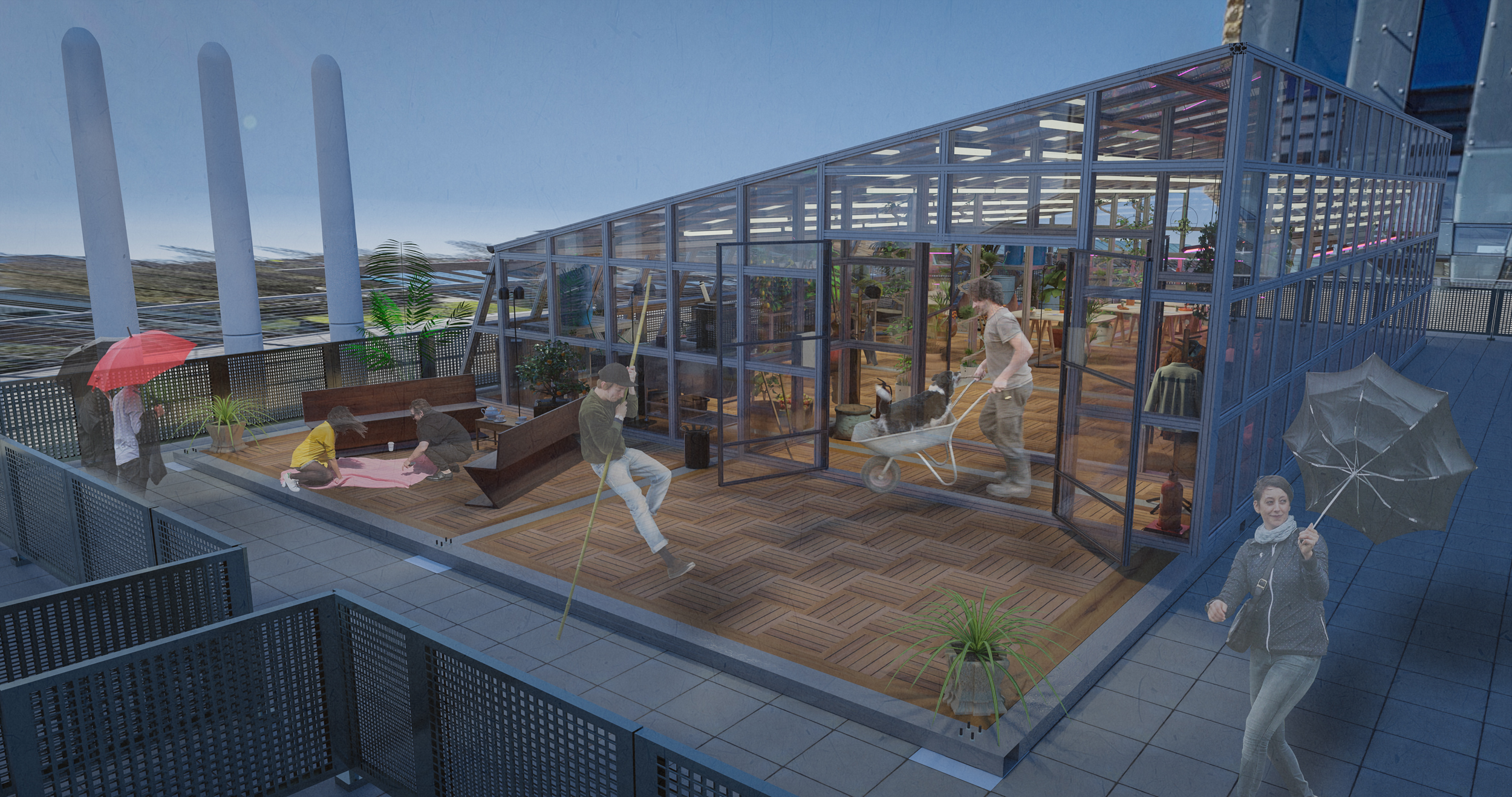
Objectives:
- To create a greenhouse on the rooftop of FedLev building, utilizing part of the unused 400 square meters space that is currently exposed to rain and powerful winds.
- To provide a sustainable and local source of food for the Rietveld-Sandebrg community by growing hydroponic crops in the greenhouse.
- To create a multi-functional space that can be used for meetings, work, and relaxation, as well as for exhibitions and performances.
- To generate electricity using renewable energy sources, such as windmills and transparent solar panels, thereby creating a self-sustaining structure and potentially reducing energy consumption for the Fedlev building.
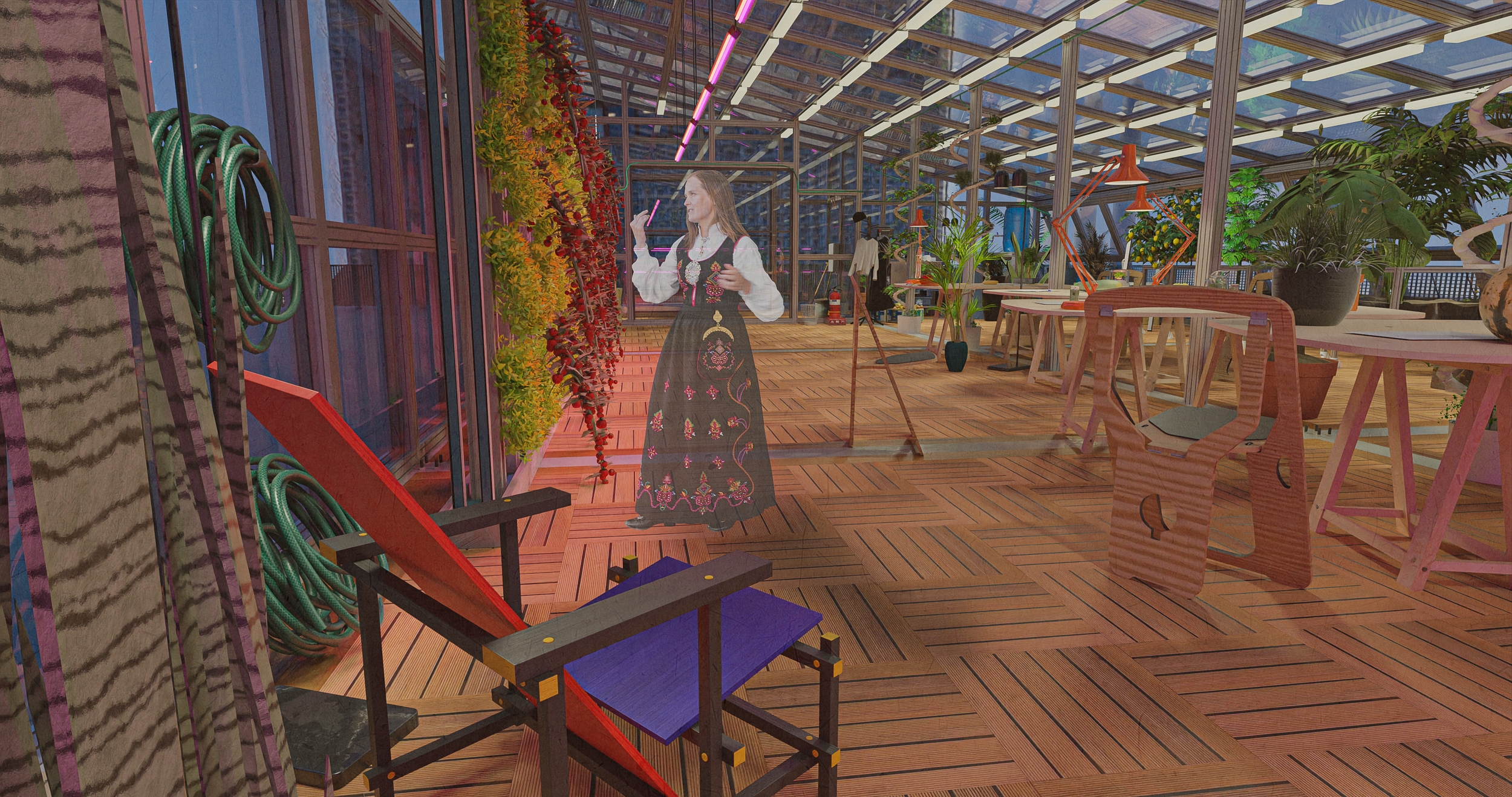
Methodology:
The proposed greenhouse will be constructed using sustainable and eco-friendly materials. The design will be transparent to allow for maximum natural light to enter and to showcase the hydroponic crops. The greenhouse will be equipped with a hydroponic system that allows for efficient use of water and nutrients and maximizes crop yield. In addition, the greenhouse will have a ventilation system that regulates temperature and humidity, creating an optimal growing environment for the crops.

The remaining space in the greenhouse will be designed to accommodate various activities. There will be workstations and seating areas for individuals to work and relax. The space will also be adaptable to host community events, exhibitions, and performances.
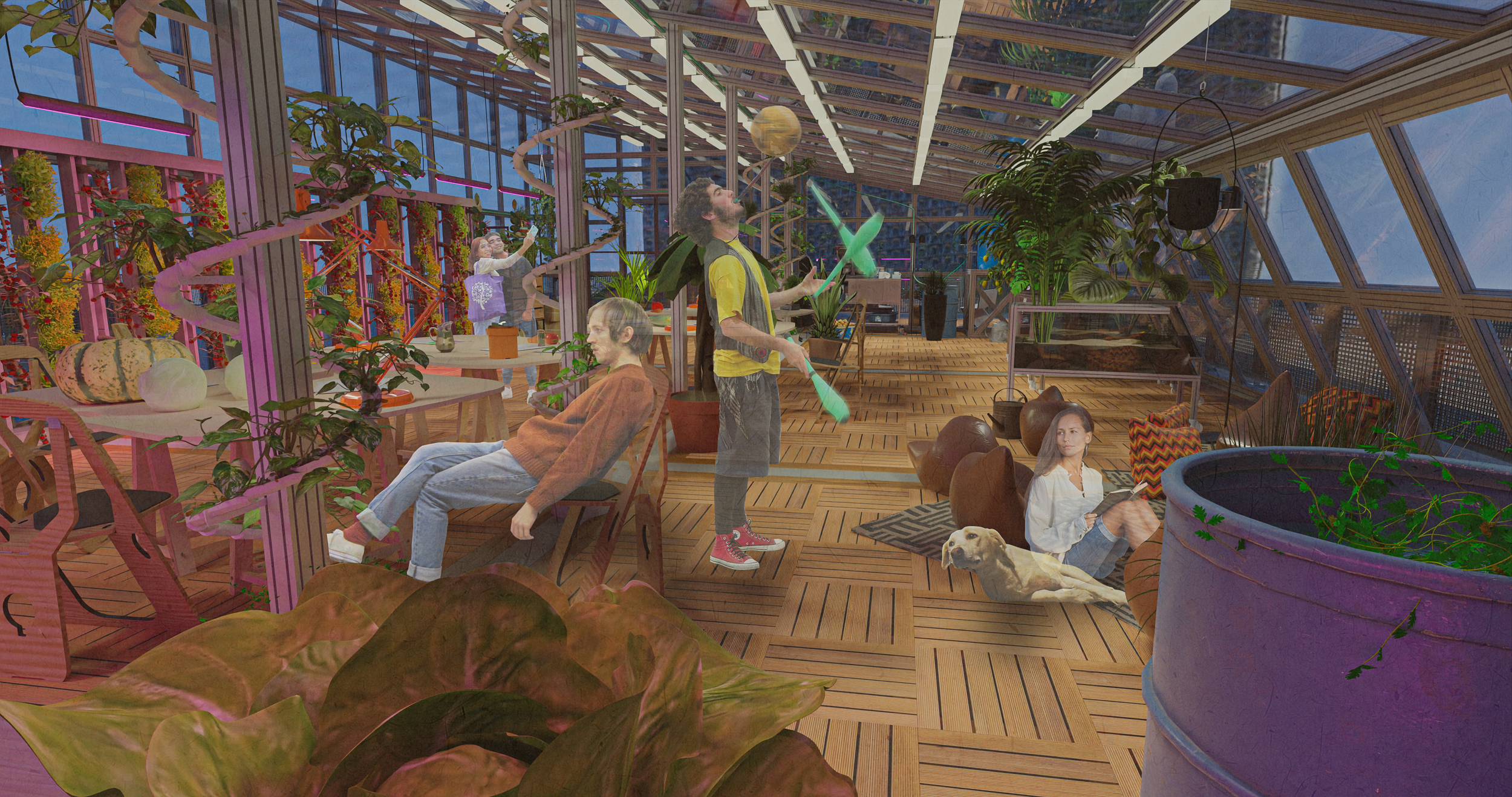
The proposed energy system for the greenhouse will consist of windmills and transparent solar panels. The windmills will generate electricity through the power of the wind, while the transparent solar panels will harness energy from the sun. The energy generated will be stored in batteries for use in the greenhouse and potentially for the Fedlev building.

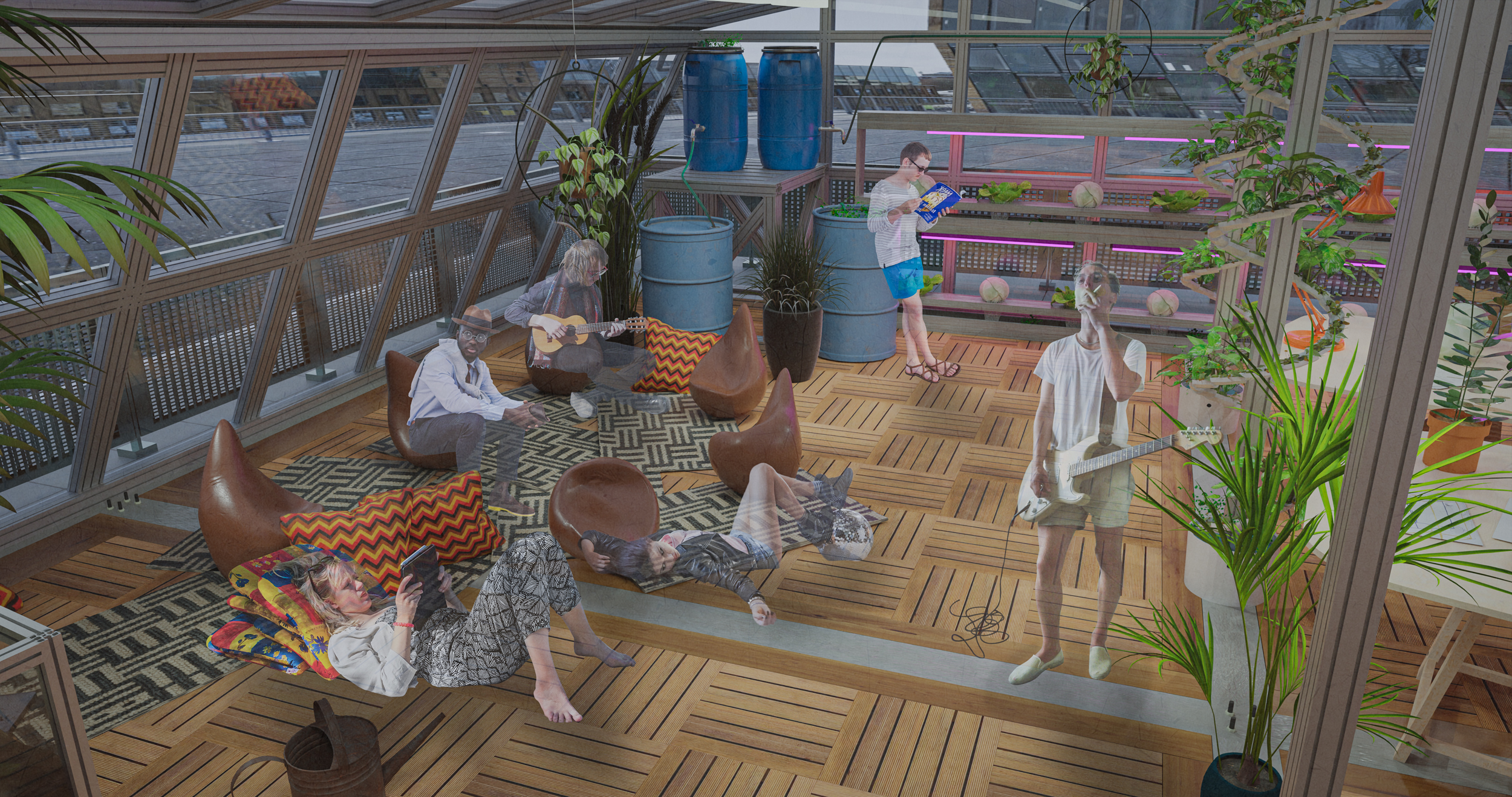
Expected Outcomes:
The proposed rooftop greenhouse will provide numerous benefits to the community and the environment. By creating a local source of food, it will reduce transportation emissions and provide fresh produce for the academy. The multi-functional space will provide a hub for events and contribute to the social fabric of Rietveld-Sandberg community. The renewable energy system will reduce the greenhouse's environmental impact and potentially save energy costs for the Fedlev building. Overall, the project will contribute to the sustainability of the community and demonstrate the potential for eco-friendly solutions in urban spaces.
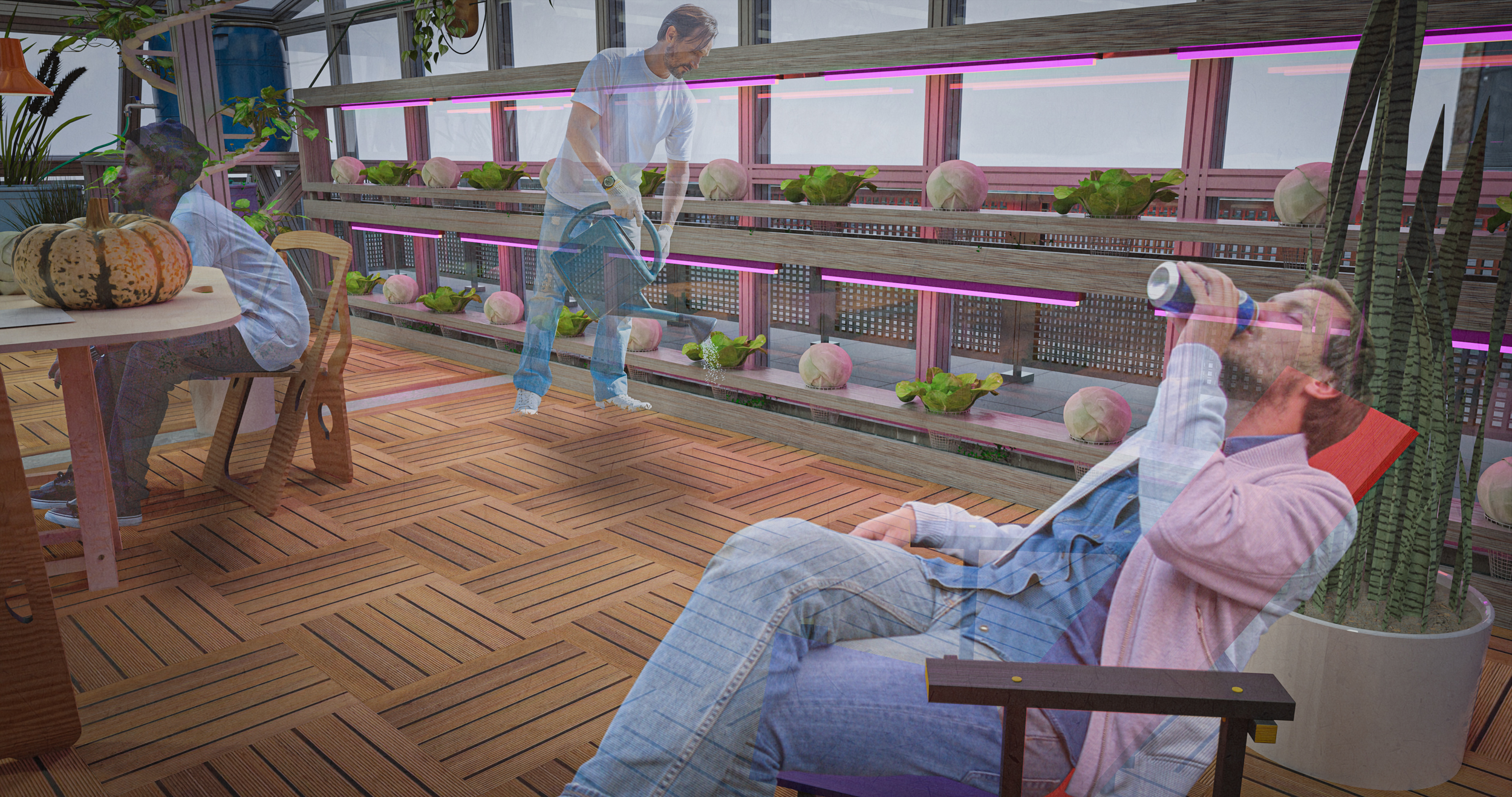
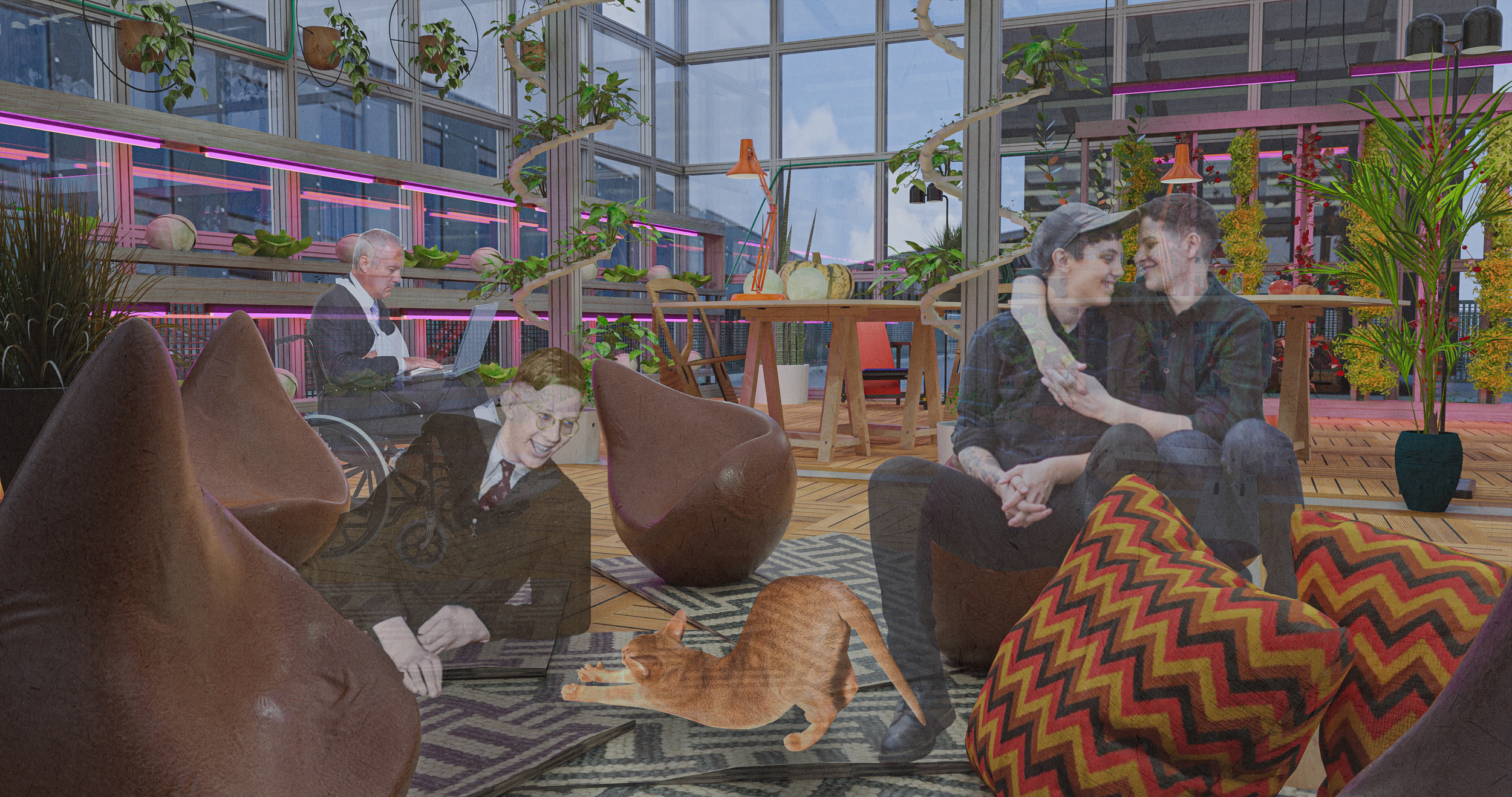
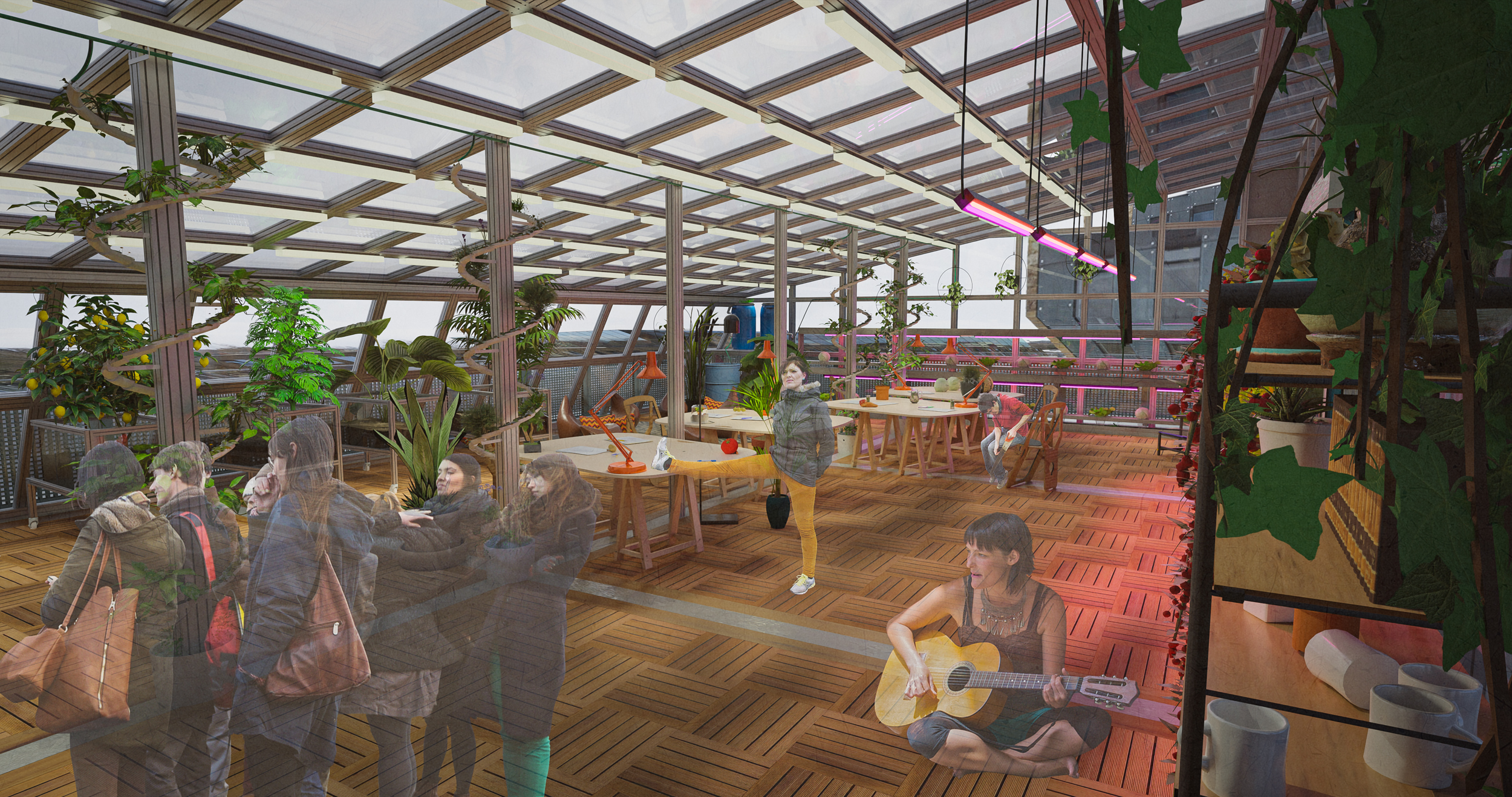
Conclusion:
The proposed rooftop greenhouse for FedLev building offers a unique opportunity to transform an underutilized space into a multi-functional and sustainable hub for the community. With the integration of hydroponic farming, community events, and renewable energy sources, the greenhouse will become a symbol of the community's commitment to sustainability and innovation.
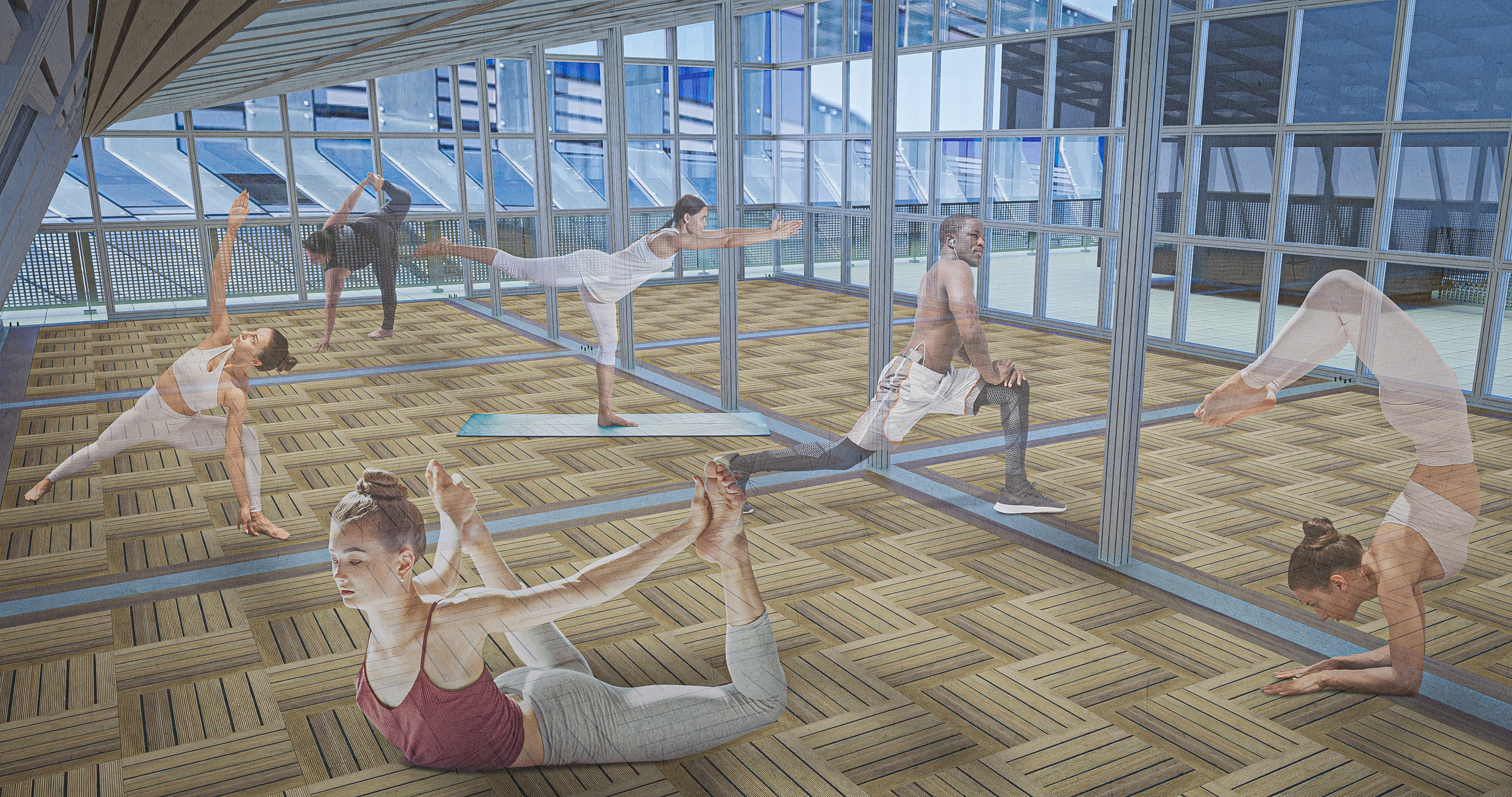
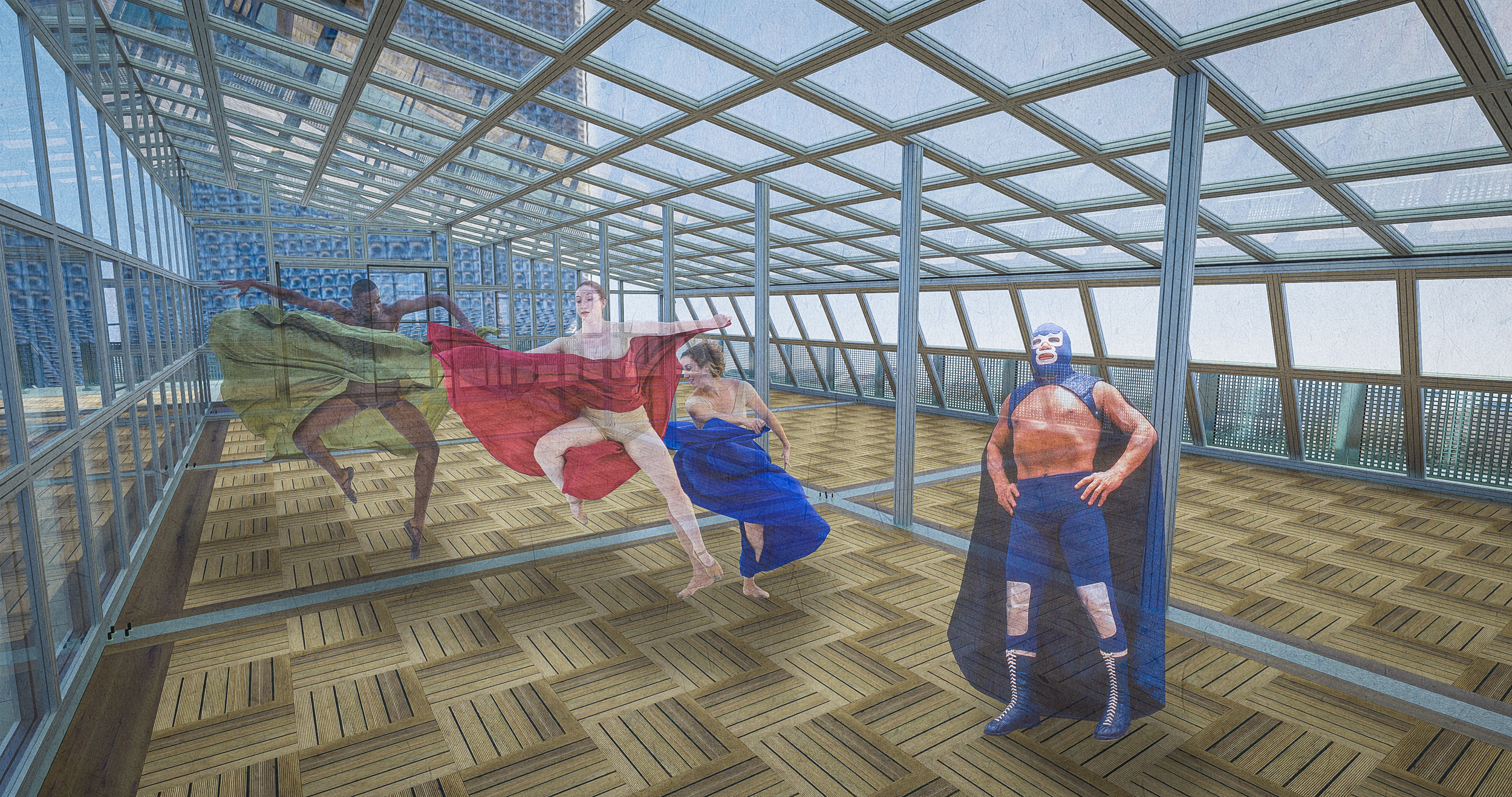
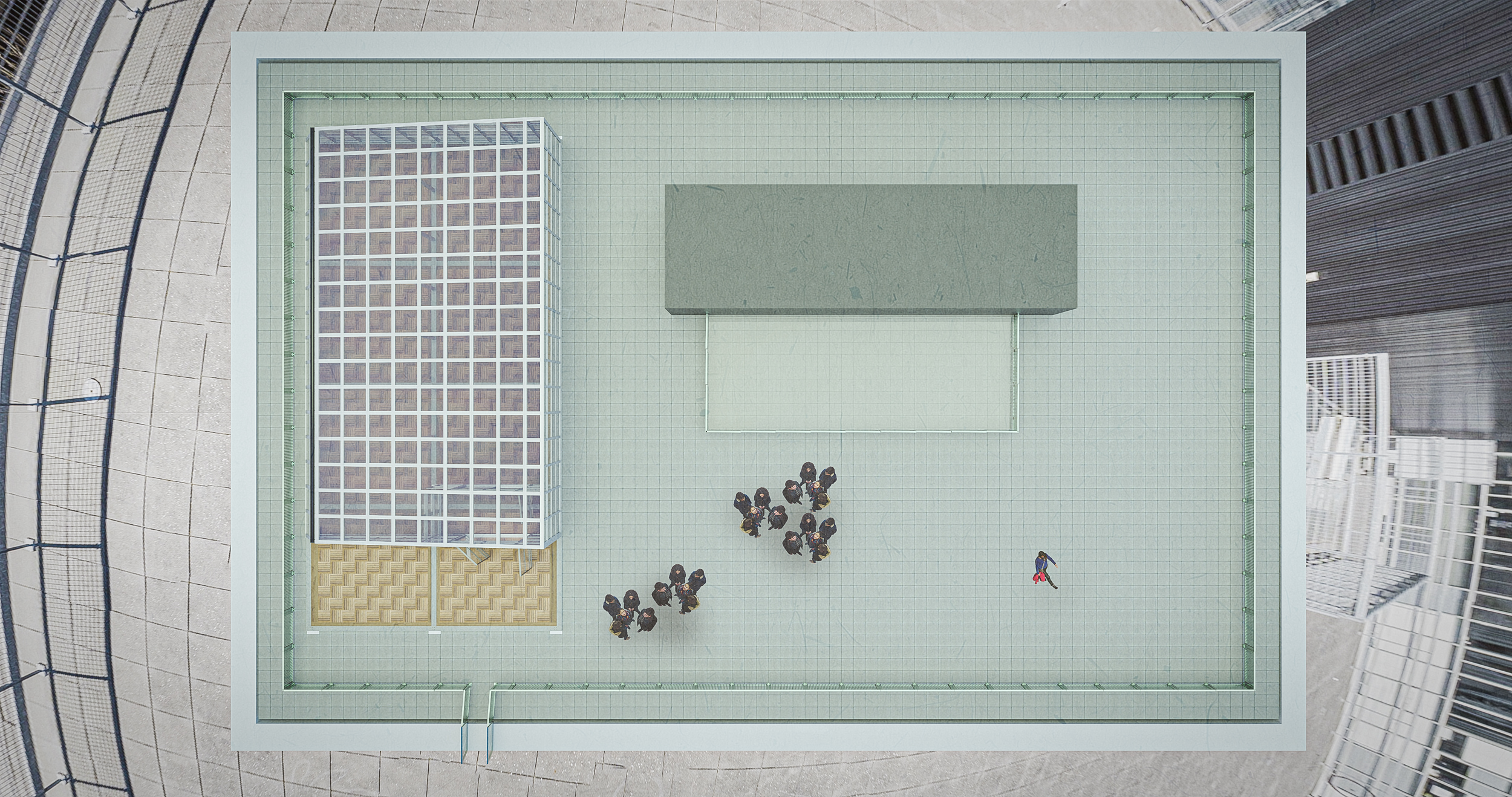
A project proposal developed by Andrei Lumpan